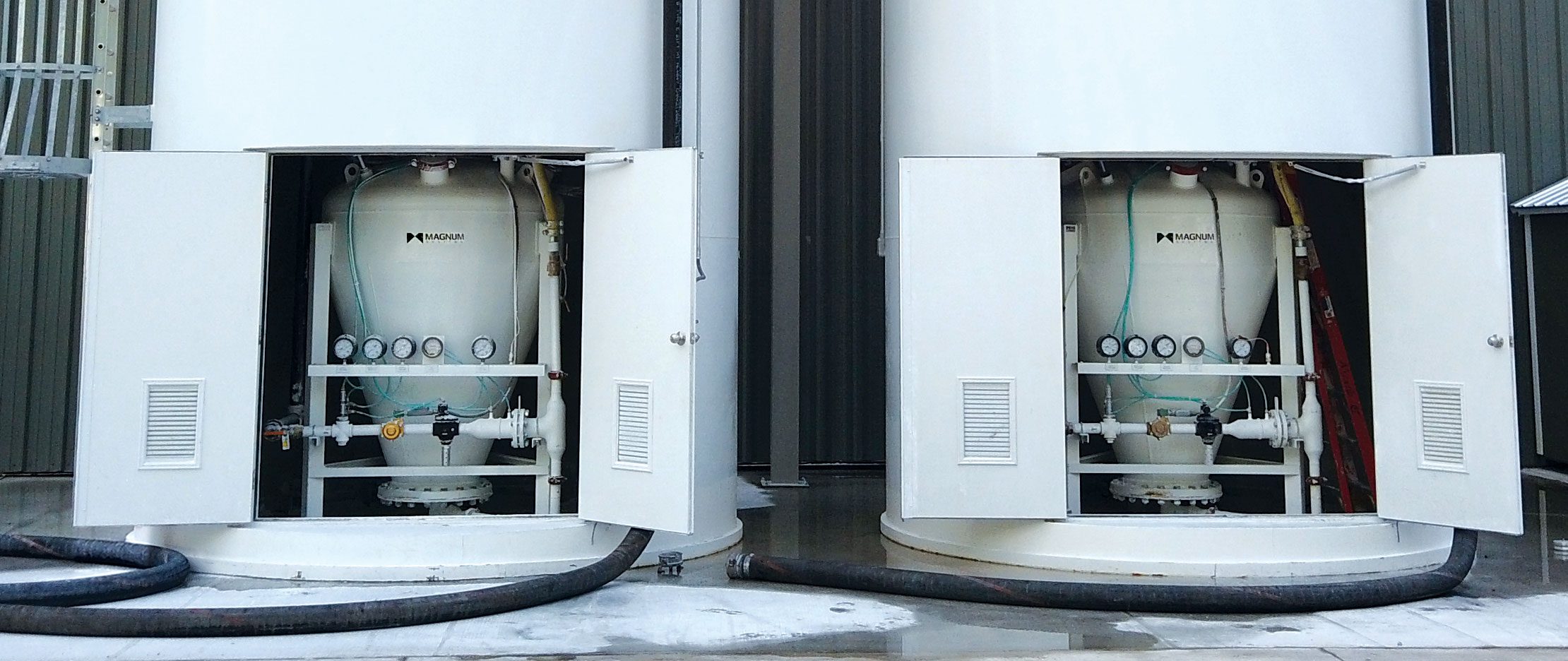

When it comes to manufacturing, efficiency is king, and downtime is the enemy. The method used to transport materials can mean the difference between a streamlined process and a chaotic one plagued with inefficiencies and breakdowns. Dense-phase pneumatic conveying is one pneumatic conveying system that stands out for its precision and reliability. Dense-phase conveying revolutionizes bulk-material handling, especially for abrasive and friable products when strategically used.
What Is Dense-Phase Conveying, and Why Does It Matter?
Unlike its dilute-phase counterpart, which relies on high-velocity air to move materials, dense-phase conveying involves pressurized air moving at lower speeds, which minimizes damage to both material and equipment, enforcing a more gentle approach to movement. This method is particularly beneficial when handling abrasive or friable substances prone to degradation.
When it comes to conveying bulk materials, not all systems are created equal. Conveying speed is a significant factor.
"The main difference between dense phase and dilute phase is the speed at which an abrasive or friable product is conveyed,” says Joel Sawalich, Special Projects Manager for Magnum Systems. “Using dense phase for these types of products greatly reduces the impact on the insides of the pipes and elbows, reducing the effects of wear on equipment and breakage of the product."
Navigating Costs and Benefits in Dense-Phase Technology
It’s no secret that transitioning to dense-phase conveying isn’t a decision to be made lightly. Nonetheless, the benefits often substantially outweigh the costs, especially for materials that require a delicate touch. When queried about scenarios justifying the investment in dense-phase technology, Sawalich offered some valuable insights.
"Abrasive materials like sand are good examples of products for which a customer may want to consider dense-phase conveying. Even more delicate material like pet kibble is a good candidate for dense-phase conveying."
The financial investment in dense-phase conveying may seem steep, but it can be pretty economical, given the long-term benefits. The reduced need for material breakage-mitigating practices, such as a higher-gauge pipe apparatus or additional handling steps, saves time and money and enhances product quality. More importantly, the extended lifespan of conveyance equipment due to reduced wear and tear lowers maintenance costs over time.
Beyond the Conveyor: An Integration with Precision
One distinguishing feature of dense-phase technology is its compatibility with batch-weighing applications.
"Dense-phase conveying is an intermittent process, and then there is continuous dense-phase conveying,” explains Sawalich. “Intermittent dense-phase is what I see the most, where some of the time is spent filling the dense-phase vessel and preparing it for the conveying cycle, and then there is the conveying cycle itself."
Integrating dense-phase conveying with batch-weighing offers a tailor-made approach to handling materials. These conveyors can be customized to hold a single product batch, ensuring precision in every convey cycle, whether for a specific weight or volume. This level of control is invaluable in preventing overages or shortages and the associated costs.
Assessing Return on Investment
Transitioning to or incorporating dense-phase technology is a strategic move that requires careful assessment.
According to Sawalich, “My first questions are usually centered around abrasion and friability of the product, what state the product is in before it hits my system, and the requirements, such as allowable breakage, at the end.”
He emphasizes the importance of an educational process when considering the best approach to pneumatic conveying. It’s about ensuring the right fit for the material type and operational demands. By comprehensively evaluating your product's characteristics, you can determine if the step towards dense-phase conveying is justifiable.
The Future of Bulk-Material Handling
Technology in bulk-material handling continues to progress, and dense-phase conveying stands at the forefront of innovative pneumatic systems. The patented bypass valve, which precludes the need for compressed air line boosters, is further proof of this innovation.
For manufacturers dealing with delicate or abrasive materials, exploring the possibilities dense-phase conveying offers could be the answer to optimizing production processes. By focusing on material integrity, reduced wear and tailored precision, dense-phase technology delivers efficient material handling and peace of mind regarding the dependability of your production line.
While the investment in dense-phase technology may seem daunting, its advantages, including product quality, operational efficiency, long-term cost savings and other benefits, will likely outweigh the cost. If your business is committed to being a leader in bulk-material handling, dense-phase conveying could be the high-efficiency solution you’ve been looking for.
Magnum Systems podcast series, AIM!
RELATED POSTS
Troubleshooting Pneumatic Conveying Systems – Dilute & Dense Phase
Troubleshooting Dense Phase Pneumatic Conveying Systems
Video – Dilute vs Dense Phase Conveying
Dense Phase Pneumatic Conveying
Related Post
How Can High-Quality Rotary Airlock Valves Elevate Your Production Line?
Why Use a Single-Source Systems Integrator Like Magnum Systems?
Mastering Integration in Manufacturing with Magnum Systems: A Deep Dive Podcast Episode
The Secrets of Valve Bag Sealing: Expert Insights from Magnum Systems